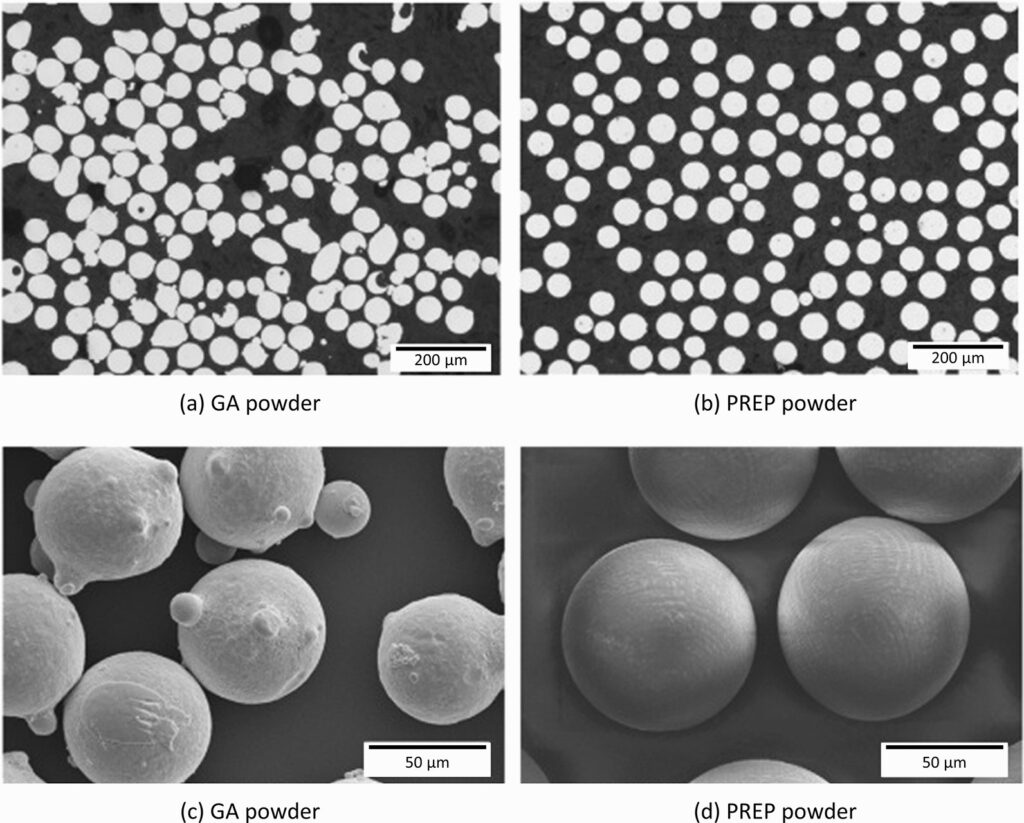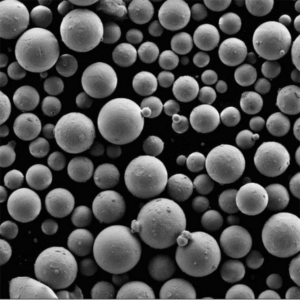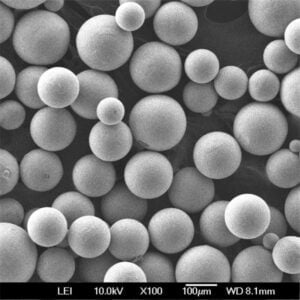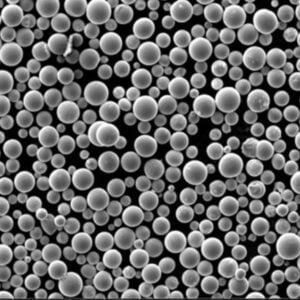
Fine Spherical Tin Alloy Brazing Powder: Creating Durable and Eco-Friendly Bonds
Low MOQ
Provide low minimum order quantity to meet different needs.
OEM & ODM
Provide customized products and design services to meet unique customer needs.
Adequate Stock
Ensure fast order processing and provide reliable and efficient service.
Customer Satisfaction
Provide high quality products with customer satisfaction at the core.
share this article
Table of Contents
Overview of Fine Spherical Tin Alloy Brazing Powder
When it comes to creating reliable, precise, and corrosion-resistant metal joints, fine spherical tin alloy brazing powder is a standout choice. Tin-based brazing powders are widely valued for their low melting points, excellent wettability, and compatibility with a variety of base metals, including aluminum, copper, and stainless steel. What sets the fine spherical tin alloy powder apart? Its spherical particle shape ensures smooth flow, even distribution, and reduced waste, making it an ideal option for high-precision applications.
Whether you’re working on electronics, automotive components, or plumbing systems, this material offers a cost-effective and efficient solution. Plus, its ability to form strong and corrosion-resistant bonds makes it indispensable in industries that demand reliability and longevity.
In this comprehensive guide, we’ll explore composition, properties, applications, specifications, suppliers, pricing, advantages, and limitations of fine spherical tin alloy brazing powder. By the end of this article, you’ll have an in-depth understanding of why this material is a go-to solution for many industries and how it compares to alternative brazing powders.
Composition and Characteristics of Fine Spherical Tin Alloy Brazing Powder
What Is Fine Spherical Tin Alloy Brazing Powder Made Of?
Fine spherical tin alloy brazing powder is formulated with tin (Sn) as the base material and alloyed with other elements like silver (Ag), copper (Cu), zinc (Zn), and bismuth (Bi). These additional elements are specifically chosen to enhance performance characteristics such as strength, melting range, and corrosion resistance.
| Element | Typical Composition (%) | Role/Function |
|---|---|---|
| Tin (Sn) | 40–95 | Core material, provides low melting point and excellent wetting properties. |
| Silver (Ag) | 0–10 | Improves strength, electrical conductivity, and corrosion resistance. |
| Copper (Cu) | 0–15 | Enhances mechanical strength and thermal conductivity. |
| Zinc (Zn) | 0–20 | Reduces melting temperature and improves flowability. |
| Bismuth (Bi) | 0–10 | Lowers the melting point further and enhances environmental safety. |
| Antimony (Sb) | ≤ 5 | Improves hardness and wear resistance. |
Key Characteristics of Fine Spherical Tin Alloy Brazing Powder
The unique composition of fine spherical tin alloy brazing powder, combined with its spherical particle morphology, gives it a set of properties that make it ideal for a wide range of applications.
- Low Melting Point: Tin-based alloys melt between 150–300°C, making them suitable for temperature-sensitive applications like electronics.
- Excellent Wettability: Tin alloys flow and bond exceptionally well, even on complex surfaces.
- Corrosion Resistance: The addition of silver or zinc enhances resistance to oxidation and chemical exposure.
- Smooth Flowability: The spherical shape ensures uniform application and reduces the risk of clogging in automated systems.
- Eco-Friendly Options: Lead-free tin alloys are widely available, meeting RoHS and other environmental standards.
- Electrical Conductivity: Tin alloys with silver or copper are ideal for brazing in electrical and electronic assemblies.
Properties of Fine Spherical Tin Alloy Brazing Powder
Let’s take a closer look at the physical, thermal, and mechanical properties of fine spherical tin alloy brazing powder.
| Property | Value/Range | Importance |
|---|---|---|
| Density | ~7.3–8.5 g/cm³ | Lightweight yet strong, suitable for thin and precise applications. |
| Melting Range | 150–300°C | Ideal for applications where heat-sensitive materials are involved. |
| Thermal Conductivity | ~50–70 W/m·K | Ensures effective heat transfer, critical for electronics and heat exchangers. |
| Electrical Conductivity | High | Perfect for electrical assemblies and circuits. |
| Hardness | ~20–50 HV | Sufficient for creating durable and long-lasting joints. |
| Corrosion Resistance | Excellent | Prevents joint degradation in harsh environmental conditions. |
| Particle Size | 10–50 µm | Optimized for precision brazing in automated or manual processes. |
Applications of Fine Spherical Tin Alloy Brazing Powder
Thanks to its versatility, fine spherical tin alloy brazing powder is used across a wide range of industries. Below are the most common applications:
| Application | Industry | Details |
|---|---|---|
| Electronic Assemblies | Electronics | Ideal for soldering circuit boards, connectors, and microchips due to its excellent conductivity. |
| Automotive Components | Automotive | Bonds aluminum and copper parts in radiators, sensors, and wiring systems. |
| Plumbing Systems and Fittings | Construction | Ensures leak-proof, corrosion-resistant bonds in pipes and valves. |
| Heat Exchangers | HVAC, Power Generation | Creates durable joints in systems exposed to thermal cycling and moisture. |
| Jewelry and Decorative Items | Consumer Goods | Enables precise, invisible joints in intricate designs. |
| Medical Devices | Healthcare | Used for assembling surgical tools and medical-grade equipment due to its biocompatibility. |
| Aerospace Components | Aerospace | Bonds lightweight aluminum and titanium parts for aircraft systems. |
Specifications, Sizes, and Standards for Fine Spherical Tin Alloy Brazing Powder
To meet industry-specific requirements, fine spherical tin alloy brazing powders are available in a variety of sizes, grades, and standards.
| Specification | Details |
|---|---|
| Particle Size Range | 10–30 µm (precision applications), 30–50 µm (general-purpose brazing). |
| Available Grades | Standard, high-purity, and lead-free options. |
| Standards Compliance | ISO 9453, JIS Z 3282, RoHS (Restriction of Hazardous Substances). |
| Packaging Options | Vacuum-sealed containers (1 kg, 5 kg, 10 kg) to prevent oxidation. |
Suppliers and Pricing for Fine Spherical Tin Alloy Brazing Powder
Looking to source fine spherical tin alloy brazing powder? Below is a list of suppliers, their available grades, and pricing information:
| Supplier | Grade Offered | Price (USD/kg) | Location | Contact |
|---|---|---|---|---|
| Mitsubishi Materials | Lead-Free Brazing Powders | $50–$100 | Japan | www.mmc.co.jp |
| Indium Corporation | High-Purity Tin Alloys | $80–$150 | USA | www.indium.com |
| Lucas-Milhaupt | Specialty Tin Alloys | $70–$120 | USA | www.lucasmilhaupt.com |
| Alpha Assembly Solutions | RoHS-Compliant Alloys | $60–$110 | Global | www.alphaassembly.com |
| Harris Products Group | General-Purpose Tin Powders | $50–$90 | USA/Global | www.harrisproductsgroup.com |
Advantages and Limitations of Fine Spherical Tin Alloy Brazing Powder
Every material has its strengths and weaknesses. Here’s how fine spherical tin alloy brazing powder stacks up:
| Advantages | Limitations |
|---|---|
| Low melting point for heat-sensitive applications. | Not ideal for applications requiring high-temperature stability. |
| Excellent wettability and flowability. | Limited mechanical strength compared to other alloys. |
| Corrosion-resistant and long-lasting. | Higher cost than traditional lead-based brazing powders. |
| Environmentally friendly and RoHS-compliant. | May require precise temperature control during brazing. |
| Compatible with various base metals. | Not suitable for high-stress or heavy-load applications. |
FAQs About Fine Spherical Tin Alloy Brazing Powder
| Question | Answer |
|---|---|
| What is fine spherical tin alloy brazing powder? | A powdered alloy used for creating strong, corrosion-resistant metal joints. |
| What metals can it bond? | Commonly bonds aluminum, copper, stainless steel, and brass. |
| What is its melting range? | Typically between 150–300°C, depending on the alloy composition. |
| Why is the spherical shape important? | Ensures smooth flowability, even distribution, and consistent bonding. |
| Is it environmentally safe? | Yes, lead-free options meet RoHS and other environmental standards. |
| What industries use it most? | Electronics, automotive, plumbing, medical devices, and aerospace. |
| How does it compare to silver-based powders? | Tin powders are more affordable but less suitable for high-temperature applications. |
Conclusion
Fine spherical tin alloy brazing powder is a versatile, efficient, and environmentally friendly material that has become a staple in a variety of industries. Its low melting point, corrosion resistance, and excellent wettability make it ideal for applications ranging from electronics to plumbing systems and beyond. While it does have some limitations, such as lower mechanical strength and high-temperature performance compared to other alloys, its affordability and ease of use make it a popular choice for many manufacturers.
Whether you’re assembling circuit boards, creating leak-proof pipe joints, or manufacturing medical devices, fine spherical tin alloy brazing powder provides the reliability and performance you need. With a range of suppliers and grades available, finding the perfect option for your application has never been easier. Ready to upgrade your brazing process? Explore your options and see why this material is trusted by industries worldwide.
Get Latest Price
About Met3DP
Product Category
HOT SALE
CONTACT US
Any questions? Send us message now! We’ll serve your request with a whole team after receiving your message.

Metal Powders for 3D Printing and Additive Manufacturing
COMPANY
PRODUCT
cONTACT INFO
- Qingdao City, Shandong, China
- [email protected]
- [email protected]
- +86 19116340731








